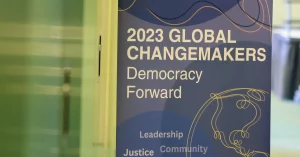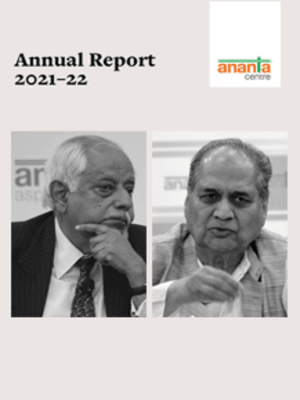Surprises galore in the Modi package
The Narendra Modi government sprang a series of surprises on almost every commentator and critic, who had been wondering how it would meet its commitment of rolling out as large an economic package as Rs 20 lakh crore to counter the adverse impact of Covid-19 on the economy. On May 12, Prime Minister Narendra Modi had underlined the need for building a self-reliant India and promised an economic package of over Rs 20 lakh crore. This was about 10 per cent of India’s gross domestic product or GDP and only a shade below what the United States had proposed to spend, as per cent of its GDP, on its Covid package. For five successive days, starting from May 13, Finance Minister Nirmala Sitharaman revealed the contours of the package that left all commentators and critics virtually stunned.
To begin with, the size of the economic package was actually larger than the promised Rs 20 lakh crore. When Ms Sitharaman gave the details of the package on the fifth and final day of her presentation, the size of the package turned out to be Rs 20.97 lakh crore. The break-down of the package was another surprise. This also showed that clever planning by the government had preceded the finalisation of the package. The key areas of the economy that the package covered were the micro, small and medium enterprises (MSME) sector, migrant workers, farmers, financial companies and policy reforms.
Anatomy of the package
The break-down of the package revealed that the government had taken credit for the refinancing and liquidity measures announced by the Reserve Bank of India (RBI) in different tranches. The liquidity and refinancing measures were aimed at providing funds and liquidity support to the non-banking financial companies, micro-finance institutions and micro, small and medium enterprises. The RBI intervention was the single largest component in the Modi government’s relief initiatives. At Rs 8 lakh crore, it accounted for over 40 per cent of the total value of the economic package.
Another 30 per cent of the package (Rs 6 lakh crore) was aimed at providing among other things collateral-free loans to MSMEs and other refinancing facilities. An estimated Rs 1.5 lakh crore was provided to support various schemes for agriculture and allied sectors. Other schemes and their allocations were: About Rs 3 lakh crore was directed at schemes to be rolled out by various organisations for migrant workers, Rs 1.7 lakh crore was meant for cash transfer and food grain delivery to the underprivileged sections of people under the Pradhan Mantri Garib Kalyan Yojana, an additional provision of Rs 40,000 crore was made for financing the Mahatma Gandhi National Rural Employment Guarantee Scheme (MGNREGS), Rs 15,000 crore was allocated for improving the healthcare infrastructure, Rs 8,000 crore was provided from the Budget to meet the viability gap funding of social infrastructure projects and another Rs 8,000 crore went by way of government contribution to provident funds of employees earning less than Rs 15,000 per month in companies with less than 100 workers.
Limited government skin in the game
The big surprise in the entire exercise was that the government’s skin in the game was limited to only 10 per cent of the total value of the package. In other words, the government was riding on the RBI and various financing agencies to put together this huge package. The fiscal cost for the government, therefore, was only about Rs 2.1 lakh crore or 1 per cent of GDP. The break-down of the additional fiscal cost was: Rs 1 lakh crore for the PM Garib Kalyan Yojana (the remaining amount was already budgeted for), Rs 40,000 crore for the MSME package (the cost of guaranteeing, etc.), Rs 16,000 crore for migrant workers, Rs 6,000 crore for farmers, Rs 40,000 crore for MGNREGS, Rs 8,000 crore for viability gap funding for social infrastructure and Rs 8,000 crore for the hit the government took by providing for EPF contribution. The government was thus acting mostly as a facilitator and guarantor for many schemes to help different sectors and workers. This was instrumental in reducing the government’s fiscal cost.
A tight leash on deficit was a part of the strategy
Reining in the additional impact of the package within just 1 per cent of GDP seems to have been a key element of the government’s strategy to prevent its fiscal consolidation programme from completely going out of control. It was conceded within the government soon after the spread of the Coronavirus that not only would its revenues fall short of the targets by a huge margin, but also its expenditure burden would see a significant increase. Three steps in quick succession followed – one of them was aimed at securing some savings in expenditure, the second was to mobilise extra tax revenue and the third step was aimed at increasing the government’s access to borrowing from the market.
Thus, the government suspended the payment of three instalments of dearness allowance (DA) to its employees and pensioners till July 2021, giving it a saving of over Rs 37,000 crore in the current fiscal year. It also raised additional excise duty and cess on petrol and diesel, taking advantage of low crude oil prices, to mobilise about Rs 1.4 lakh crore in the entire year. The additional revenue mobilisation was based on a 12 per cent decline in consumption of petrol and diesel. This was a reasonable estimate as after having witnessed a fall of 60 per cent for petrol and 56 per cent for diesel in April, the extent of decline reduced to 35 per cent in May. With the gradual easing of the lockdown, consumption of petrol and diesel is expected to return to the level obtained in pre-Covid months. The third step was to increase its borrowing limit by 54 per cent from Rs 7.8 lakh crore, originally budgeted for 2020-21, to Rs 12 lakh crore. The additional Rs 4.2 lakh crore was to be used by the government to meet its expenditure-revenue mismatch.
Fisc gets a breather, warding off concerns over rating
The net impact of these three steps on the government’s finances was significant. About 84 per cent of the net fiscal cost of the economic package was made good by the expenditure saving of Rs 37,000 crore through the suspension of DA payment and additional oil revenue of Rs 1.4 lakh crore. The net burden of the package was thus reduced to just about Rs 33,000 crore. Remember that the government had already planned to borrow Rs 4.2 lakh crore more during the year. In other words, the government, even after announcing an economic package of Rs 21-akh crore, has kept its powder dry to plan any fresh package or withstand the revenue shortfall that are feared during the year. The firepower that the government still has is close to about Rs 3.9 lakh crore.
Yes, the government’s fiscal deficit will have widened already from the Budgeted 3.5 per cent of GDP to 5.3 per cent as a result of the higher borrowing. But if it can prevent a precipitous fall in growth, the government can manage to keep the deficit slippage within a reasonable limit. It is this perception of the government having followed a conservative and responsible fiscal path, which has prevented a downgrade of India by rating agencies. Already about 20 countries have been downgraded by the global rating agencies. If India escapes a downgrade, it would probably be because it limited its fiscal cost of a huge package and took corresponding steps to mobilise more revenue, cut expenditure and transparently go in for extra borrowing.
RBI cuts rates, breaks the silence on growth forecast
The challenge of tackling the adverse economic impact of Covid-19 led the Reserve Bank of India to advance its bi-monthly monetary policy review meeting by about a fortnight. In the third week of May, the Monetary Policy Committee met and announced a further reduction of 40 basis points in the repo rate (at which banks take loans from the RBI) to 4 per cent. Similarly, the reverse repo rate (at which banks earn interest on their deposits with the RBI) was cut by 40 basis points to 3.35 per cent. The reduction in the reverse repo rate has been a little more at 155 basis points. Remember that reverse repo rate had been cut just a few weeks ago by 25 basis points. Reverse repo rate has become a more effective operational interest rate yardstick, as banks are more interested in parking their money with the RBI, instead of lending to industry. These steps are expected to result in lower cost of money for industry, provided transmission of the repo rate signaling gets better. There is no demand for fresh credit at present. The latest round of cut is to prepare for the days when the economy reopens and industry may look for loans. Cheaper loans may increase the demand. Only time will tell if this strategy will work.
The bigger implication of the RBI’s monetary policy review in the third week of May was in its growth projection for the current year. Just weeks ago, the government’s chief economic advisor had projected an economic growth rate of 2-3 per cent for 2020-21. But the RBI Governor made it amply clear that India’s economic growth will face its worst moment in about 40 years. The last time the Indian economy contracted was in 1979-80. And in 2020-21, the RBI fears that growth could be in negative zone. Many private research agencies have already forecast a contraction or negative growth for the Indian economy in 2020-21, but this is the first time some clarity on growth has emerged from the government side. The RBI’s inflation forecast also was important. Its assessment suggests that inflation may see a deceleration in the second half after going up a little in the first half of the year.
Infrastructure goals and grand announcements
India’s infrastructure goals just got a tad more ambitious. A task force, headed by a finance ministry secretary, had submitted an interim report by the end of December 2019. It had stated that the National Infrastructure Pipeline to be rolled out in the next five years should aim at setting up projects worth Rs 102 lakh crore. This was a huge task, amounting to almost doubling the efforts as the annual expenditure on infrastructure projects in the last few years was just about Rs 10 lakh crore. That report was finalised and submitted at the end of April 2020, much after Covid-19 had begun to show its devastating impact on the economy. Yet, the National Infrastructure Pipeline pegged its total project size at a higher level – at Rs 111 lakh crore. Understandably, the share of the private sector in the projects pipeline was brought down from 22 per cent to 21 per cent. But surprisingly, the share of the states, which are in no better shape than the Centre, went up from 39 per cent to 40 per cent. To top it all, Road and Highways Minister Nitin Gadkari announced that there would be Rs 15 lakh crore of investment in the road sector in the coming two years. This should have cheered everyone. Instead, it raised questions on the feasibility of achieving such an impossible goal. In the last few years, the road sector investment did not cross Rs 2 lakh crore in a year. Even the National Infrastructure Pipeline had projected a total investment of Rs 20 lakh crore over a period of five years. So, where will be the extra investment for the road sector come from? Setting aspirational targets is laudable, but keeping them realistic is also important.
Labour policy changes in a hurry; reversal likely
In the wake of Covid-19, a few state governments pushed through a series of labour policy changes. Uttar Pradesh led the show by suspending all labour laws except a few on payment of wages, norms for children and women workers, etc. Madhya Pradesh followed suit within a couple of days. State governments in Gujarat, Himachal Pradesh, Rajasthan, Haryana and Uttarakhand also amended their labour laws to increase the maximum weekly hours of work. In many states, the changes were effective for 1,000 days or for over three years. The implications of these labour law changes, brought in a hurry, were that workers had little recourse to settling their disputes with the management under the relevant laws. For employers, the new laws meant that they could hire and fire workers at will without any reference or restrictions imposed under the earlier labour laws. The apparent objective was to attract industries to invest in projects after the lockdown, without the restrictions on them on hiring and firing of workers.
However, these hurried changes in labour laws have been questioned in various circles. Even the Union government is reportedly examining steps to ensure that workers’ interests are not compromised in the name of so-called labour reforms. India after all is a signatory to the International Labour Organisation and cannot abrogate labour laws in a flourish. The Vice-Chairman of NITI Aayog, Rajiv Kumar, has also made an impassioned plea against these changes arguing that suspension of labour laws did not amount to labour reforms. It seems a few checks will be imposed by the Centre on the way some states have played havoc with the basic rights of workers. Commentators, who had welcomed the state government initiatives as an instance of their grabbing the opportunity of a crisis for quick reforms, will most likely eat humble pie.
Trade numbers reveal an interesting trend
Believe it or not, India’s overall merchandise and services trade account showed a surplus in April 2020. It was a small surplus of $0.16 billion, but a surplus that India has not experienced for decades. The surplus, however, was no reason for celebration as it was an outcome of reduced economic activity. India’s merchandise exports fell by over 60 per cent in April to $10.36 billion, while imports in the same month fell by 59 per cent to $17.12 billion. But the merchandise trade deficit of $6.76 billion was wiped out by the better performance of the services trade, where exports in April fell by just 3 per cent to $17.6 billion and imports fell by a higher margin of 6 per cent to $10.68 billion. The consequent services trade surplus of $6.93 billion thus gave the overall trade account a marginal surplus of $0.16 billion. Can this be sustainable? Unlikely, as economic activities resume after the easing of the lockdown and India’s imports pick up. Yet, it is a development that cannot be ignored. In merchandise exports, only two items recorded an increase in April – iron ore by 18 per cent and drugs & pharmaceuticals by 0.25 per cent. In merchandise imports, all items recorded double-digit declines in per cent, except one item – pulses whose imports fell only by 8 per cent.
Data collection worries for policy making
Covid-19 and the lockdown have taken a toll of India’s economic data collection system. The pandemic has adversely impacted the reporting discipline among economic entities. Worse, the various methods by which the Central Statistics Office would get data on output and prices have been severely impacted by the lockdown. The result is that the while releasing the March data on the Index of Industrial Production (IIP), the government clarified as follows: “In view of the global Covid-19 pandemic and consequent nationwide lockdown measures implemented since March, 2020, the data flow from the producing units was impacted. As some of these units are yet to resume operations, the response rate has been lower than usual. Consequently, the Quick Estimates are likely to undergo revision and will be incorporated in subsequent releases as per the revision policy of IIP.” Therefore, one should take the 17 per cent contraction in industrial output in March with a pinch of salt. This will be revised later when more data come in.
A similar fate awaited the release of the retail inflation data. The CSO released the April inflation data only for sub-groups, whose transactions could be tracked. “Accordingly, the Price Movement for the sub-groups ‘Meat and fish’ and ‘Prepared meals, snacks, sweets etc.’ under ‘Food & Beverages’ Group as well as the Groups ‘Pan, tobacco and intoxicants’ Group, ‘Clothing and Footwear Group’ were not compiled. Under ‘Miscellaneous’ Group, only the index for ‘Health’ subgroup has been compiled for the month of April, 2020”, the CSO statement explained. What’s more, the General CPI and indices at State/UT level were not released for April.
The inadequacy of production and price data and their partial availability will be a severe constraint for policy makers, who rely on such information before making interventions. The Reserve Bank of India will have to rely more on its own data team before adopting its monetary policy stance. With less data, the tasks of policy making has become more formidable.
(The views expressed are personal)
Supported by

























